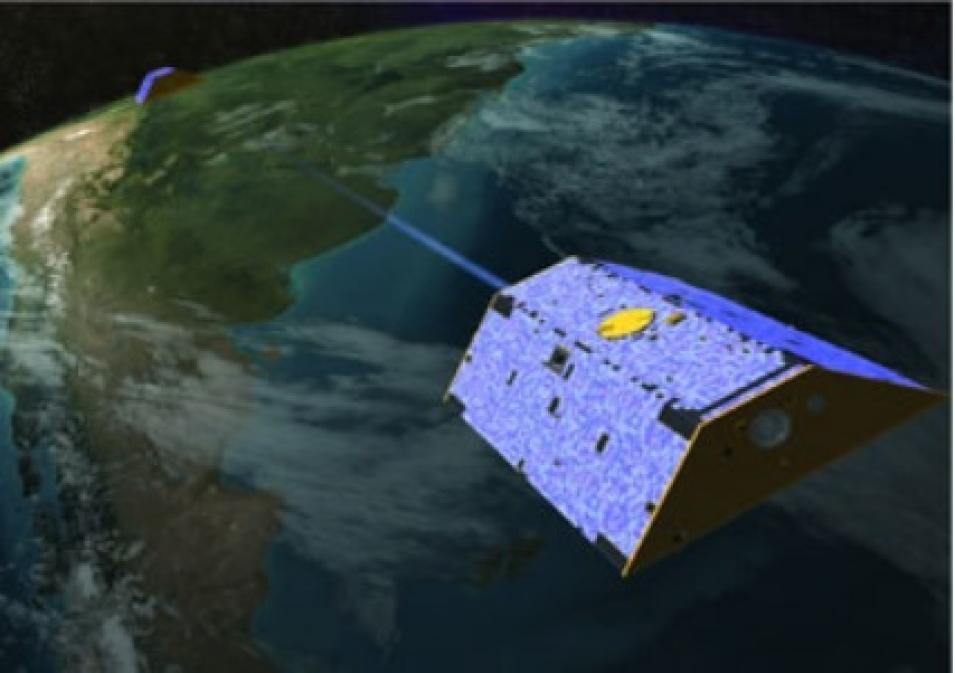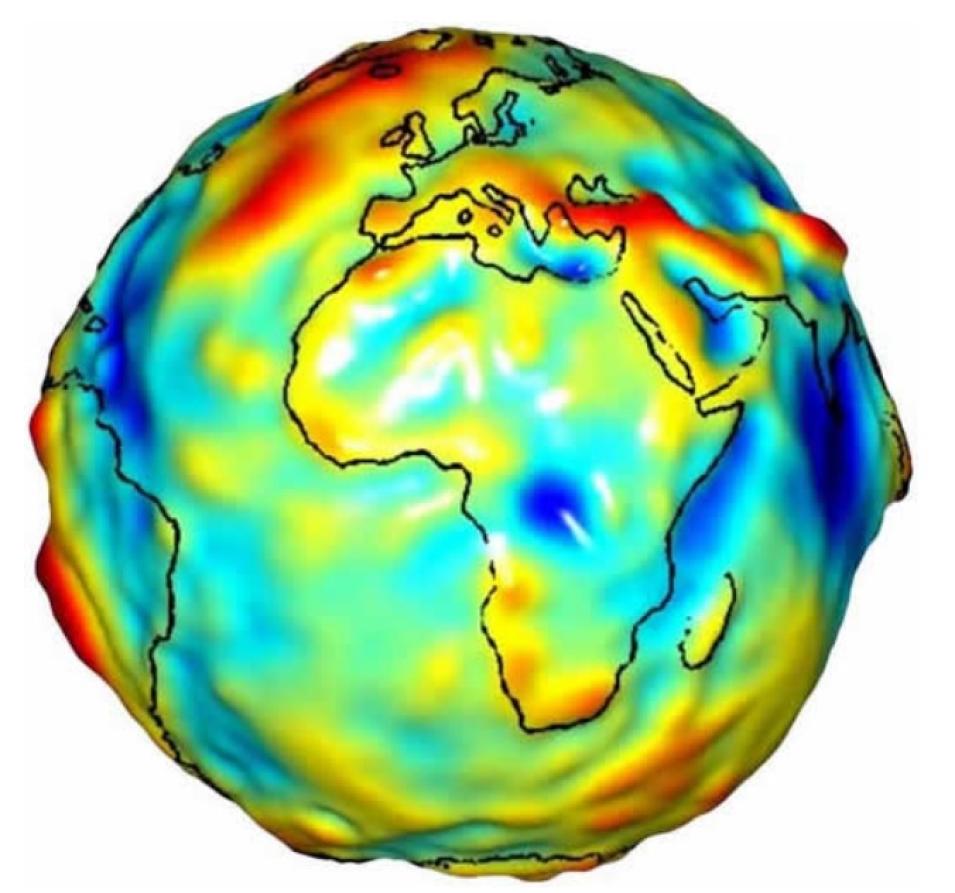Scientists are also using GRACE data to survey frozen water in the form of ice sheets and large glaciers. Isabella Velicogna, a research scientist at the University of Colorado, studies mass changes in the Greenland ice sheet. "Some components of the seasonal cycle in Greenland are not very well understood, like ice discharge and subglacial hydrology. GRACE sees some of these components that are difficult to measure," she said. Other instruments, such as altimeters, can determine elevation changes in the ice sheet, but GRACE sees the total mass, alerting scientists to how much ice and water are draining off the ice sheet. "GRACE provides information that you can't get from any other satellite instrument," said Velicogna.
After analyzing two years of data, Velicogna reported a longer-term trend: the ice sheet is losing mass. Although other Greenland research supports this finding, she added that scientists need a longer time series of data to understand what is happening to the ice sheet. Greenland holds about 2,600,000 cubic kilometers (624,000 cubic miles) of ice, which, if melted, would result in a sea level rise of about 6.5 meters (22 feet). Since the late nineteenth century, melting ice sheets and glaciers have increased global sea level by about 1 to 2 centimeters (0.3 to 0.7 inches) per decade.
Even glaciers that melted long ago affect sea level today. For instance, a large mass of ice covered the Hudson Bay area during the last Ice Age, which ended around 15,000 years ago. Now, without the weight of glaciers, the land beneath that area is slowly rebounding at a rate of about 1 centimeter (0.3 inch) per year. Over time, this postglacial rebound affects regional coastlines, complicating tide gauge readings and making it harder to monitor changes in global sea level. GRACE data will allow scientists to measure the change that can be attributed to postglacial rebound, making it easier to determine how much other factors -- such as global warming -- contribute to rising sea levels.
Investigators designed GRACE as a five-year mission, but scientists hope to gather data for up to 10 years. Continuing the mission life will allow them to explore new applications for GRACE data. "We're combining gravity measurements with other data, like those from ice sheet altimetry or radar altimetry. But we're still trying to understand what all these data tell us," said Watkins. "It's a very impressive engineering accomplishment that allows us to make such detailed measurements. GRACE gives us high-resolution gravity mapping - it's a pioneering remote sensing tool."
References
Tapley, B.D., S. Bettadpur, M. Watkins, and C. Reigber. 2004. The gravity recovery and climate experiment: mission overview and early results. Geophysical Research Letters, 31, L09607. doi:10.1029/2004GL019920
Chambers, D.P., J. Wahr, and R.S. Nerem. 2004. Preliminary observations of global ocean mass variations with GRACE. Geophysical Research Letters, 31, L13310. doi:10.1029/2004GL020461
For more information
NASA Physical Oceanography Distributed Active Archive Center (PO.DAAC)
Gravity Recovery and Climate Experiment (GRACE) website
GRACE fact sheet
GRACE Space Twins Set to Team up to Track Earth's Water and Gravity
| About the remote sensing data used |
|---|
| Satellite | Gravity Recovery and Climate Experiment (GRACE) | |
| Parameter | gravity variations | |
| DAAC | NASA Physical Oceanography Distributed Active Archive Center (PO.DAAC) | |



